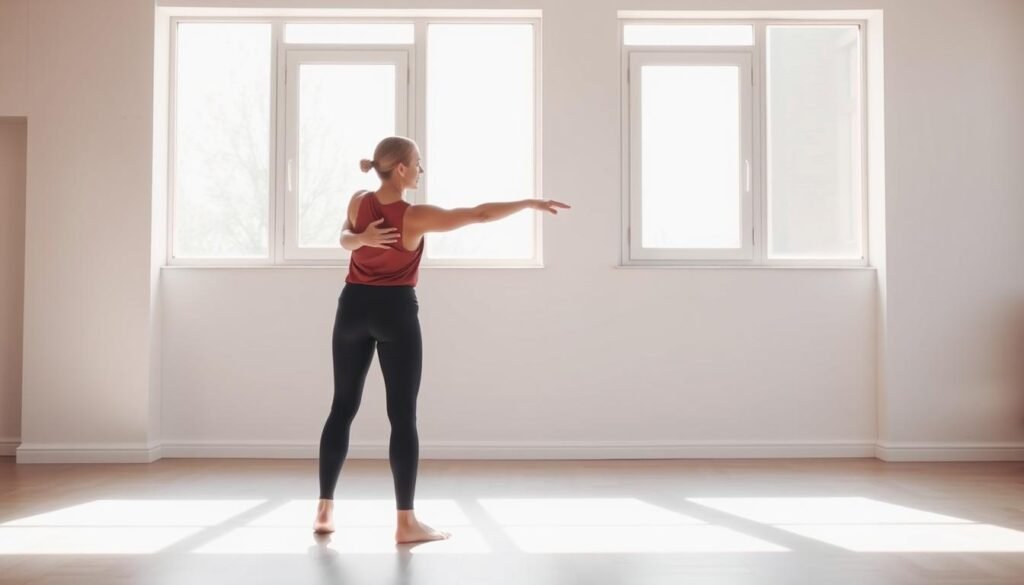Harnessing Wearable Tech: How Your Smartwatch Can Boost Your Fitness Goals

Smartwatches turn everyday activity into clear, guided training. Wrist-based sensors track heart rate, steps, and time so you can shape each session to protect sensitive joints while supporting overall health.
Think of your wearable as a coach on your wrist. It suggests movements with lower impact and logs patterns of pain so you can adapt without losing progress.
By combining walking, cycling, swimming, and water-based options with on-wrist prompts, you learn how to pace exercise time and intensity. Real-time heart-rate feedback helps you avoid overexertion and keep sessions effective.
With simple warm-ups, gradual progression, and good form, you reduce risk and improve flexibility. Wearable reminders keep you consistent, and tailored sessions help manage weight to ease strain on knees and other joints.
Key Takeaways
- Smartwatches structure activity by tracking heart rate, steps, and duration.
- Wearables help choose lower-impact movements and monitor pain trends.
- Real-time feedback prevents overexertion while meeting fitness goals.
- Pacing, warm-ups, and correct form reduce injury risk.
- On-wrist reminders aid consistency and improve quality life over time.
Why Smartwatches Pair Perfectly with Low-Impact Exercise for Joint Health
Using a wearable helps you favor safer loading patterns that keep cartilage healthy and motion steady. The device tracks heart rate and time, so you can choose activities that limit excessive compression while still moving enough to promote synovial fluid circulation.
How reduced impact supports cartilage, stability, and mobility
Reduced-impact loading preserves cartilage by avoiding high compressive forces. Gentle, regular motion encourages lubricating fluid and improves range motion.
That movement builds the muscles around the joint for better stability and balance. Weight-bearing walking supports bone density, while cycling and swimming boost circulation without heavy loading.
Evidence-based benefits across common activities
Tai chi and yoga improve alignment, flexibility, and balance with low mechanical stress. Swimming adds resistance with buoyancy that lowers load. Together these activities lower risk of injury and reduce stiffness for people with arthritis or past strains.
- Smartwatch guidance: heart-rate zones keep effort safe and curb flare-ups.
- On-wrist alerts: prompt form checks and pacing adjustments to improve movement quality.
- Progression: incremental load increases build stability in supporting musculature.
- Cardio benefits: steady walking or cycling supports cardiovascular health while preserving joint structures.
“Consistent, measured motion reduces stress on irritated tissues and supports long-term mobility.”
Low-Impact Workouts, Joint Pain Relief Exercises
Smart programming turns gentle movement into meaningful gains for stability, strength, and daily comfort. Use simple sessions to target legs, core, and balance without overdoing intensity.
Walking and Nordic walking
Set a step goal and map routes with varied pacing to build leg strength and bone density. Add poles to engage the upper body and boost stability on uneven surfaces.
Cycling and elliptical
Use cadence targets and heart-rate alerts on your watch to strengthen quads and hamstrings while protecting knees. Stationary cycles let you control load and monitor training metrics.
Swimming and water aerobics
Water’s buoyancy lowers load and its resistance improves range of motion. Schedule pool sessions for days with more discomfort and log perceived soreness alongside HR data.
Yoga, Pilates, and tai chi
Timed holds and slow transitions build alignment, balance, and core stability. Program on-wrist timers for breath-linked poses and progressive session length.
Resistance bands and chair routines
Light band sets and seated strength moves activate muscles around sensitive areas. Track sets and volume on your watch and use reminders for rest between sets.
- Tip: Choose cushioned surfaces and supportive shoes for walking to reduce impact and improve balance.
- Tip: Record perceived discomfort with heart-rate trends to refine your plan and avoid triggers.
“Consistent, measured movement builds capacity without unnecessary strain.”
Use Heart-Rate Zones and Real-Time Coaching to Optimize Every Low-Impact Session
Targeted heart-rate zones help you build endurance and protect sensitive joints. Define aerobic ranges on your smartwatch so each session supports cardiovascular health while keeping impact manageable. Zone-based coaching lets you extend steady-state time without sudden intensity spikes that can trigger joint pain.

Setting aerobic targets for steady-state, joint-friendly cardio
Program a clear aerobic zone for walking, cycling, or pool sessions. Use on-wrist alerts to stay inside that range and increase session time safely.
Cadence, pace, and stroke metrics for walking, cycling, and swimming
Track cadence for walking or cycling and stroke rate for swimming to keep movements efficient. Consistent pace reduces unnecessary shear on joints and helps you gain strength with controlled resistance.
- Zone-based coaching: extend steady effort while avoiding spikes that worsen joint pain.
- Conservative intervals: use recovery timers to build strength and endurance without pushing through discomfort.
- Post-session review: compare heart rate, pace, and movement quality to spot patterns linked to pain and adjust training.
- Progressive load: add gentle resistance—hills or gear changes—only when pain is well-managed to support surrounding muscles.
Set Smart Reminders for Range of Motion, Mobility, and Anti-Stiffness Breaks
Use hourly reminders to nudge on quick mobility moves that protect range motion and boost circulation.

Program brief micro-sessions on your watch for ankle pumps, seated leg extensions, and shoulder rolls. These 30–60 second bouts fit into a busy time window and cut stiffness while keeping muscles active.
Micro-sessions: ankle pumps, seated leg extensions, and shoulder rolls
Start with simple sets and focus on smooth control. Log a short pain rating before and after each micro-session to confirm the movement helps rather than worsens joint pain.
Progressive loading: safe advancement without aggravating pain
Only add reps or a resistance band when ratings remain stable. Use the watch to track trends so you can increase load without risking flare-ups.
- Guided timers: 30–60 second intervals to fit frequent breaks into one day.
- Rotate leg and upper-body drills to spread load and support overall stability.
- Warm up with gentle motion and cool down with easy stretches to reduce irritation.
“Short, consistent motion preserves mobility and keeps stiffness from setting in.”
| Micro-Session | Duration | When to Progress |
|---|---|---|
| Ankle pumps | 30–45 sec | When pain ratings stay stable for 3 days |
| Seated leg extensions | 30–60 sec | Add 5 reps or light band after 1 week of stable responses |
| Shoulder rolls | 30 sec each direction | Increase sets if motion and comfort improve |
Review weekly summaries on your device to spot which micro-sessions best maintain mobility and which need modification. Small, consistent moves over time protect joints and preserve function.
Track Pain, Stiffness, and Recovery to Personalize Your Joint-Friendly Plan
Use on-wrist logging to map how symptoms shift with different activities, times of day, and footwear. Brief entries make trends visible so you can fine-tune sessions and protect long-term health.
![]()
Pain journaling on-wrist: patterns, triggers, and exercise modifications
Tag sessions with quick notes about pain, stiffness, and which movements seemed to trigger discomfort. Record conditions like osteoarthritis, rheumatoid arthritis, or bursitis to capture how each condition responds to specific activity.
Create templates for arthritis- or bursitis-sensitive routines that emphasize extended warm-ups, controlled motion, and supportive footwear.
Sleep and HRV signals: when to push, when to prioritize recovery
Compare joint pain and symptom tags with sleep stages and HRV. If stress rises and recovery metrics drop, scale back intensity to protect progress and maintain quality life.
- Match lower-symptom days with slightly longer sessions.
- Choose mobility and gentle exercise on higher-symptom days.
- Export logs to share with your clinician for smarter planning.
“Small data points over time reveal the best path forward.”
Support Mind-Body Health: Stress, Mindfulness, and Digital Balance on Your Wrist
Smartwatch tools can link mental health and physical training. Guided timers for breathing and brief mindfulness reduce physiological arousal before activity. These short practices help lower perceived pain sensitivity and make sessions more sustainable.

Breathing timers, mindfulness sessions, and stress alerts during workouts
Enable stress tracking and schedule 2–5 minute breathing sequences to downshift before exercise. Use on-wrist prompts to cue slow inhalations and longer exhales and to check recovery during effort.
Digital detox strategies to reduce overwhelm and improve adherence
Set notification-free windows for training and rest days. Follow evidence-based detox tips—limit apps, batch alerts, and assign device-free meal times—to protect focus and long-term fitness habits.
- Schedule mindfulness on rest days to support overall health without taxing your joints.
- Pair stress alerts with pain logs to spot links between mental load and symptoms.
- Use yoga flows with on-wrist timers to keep form safe and improve calm.
“Small, consistent mind-body habits improve resilience and make physical activities easier over time.”
Fuel and Hydrate for Low-Impact Performance and Longevity
Thoughtful meal timing and regular fluid intake keep energy steady and support durable muscle repair. Good nutrition lowers excess weight and reduces load on the body while preserving strength.
Protein timing and quality for muscle support without joint strain
Space protein evenly across the day so muscles get amino acids when they need them for repair. Set watch reminders for a protein-rich snack or meal after training to help recovery and maintain muscle mass.
Choose lean and plant proteins—fish, poultry, beans, lentils, and dairy—following guidance from the Harvard Nutrition Source. These choices support muscle building while limiting inflammation that can worsen joint pain.
Blue Zones–inspired eating patterns and glucose-aware choices
Adopt plant-forward habits from Blue Zones: more vegetables, whole grains, nuts, and legumes. These patterns correlate with long-term health and markers linked to longevity.
Lessen spikes in blood sugar by pairing carbs with protein and fiber, per CDC healthy-eating principles. Stable glucose helps prevent energy crashes that increase perceived pain and fatigue during activity.
- Use on-wrist prompts to hydrate—aim to sip water regularly before, during, and after sessions.
- Plan modest calorie deficits with steady training to lower weight without losing strength.
- Schedule grocery and meal-prep blocks so nutrition supports body composition and symptom management.
“Consistent protein spacing and conscious hydration make movement more sustainable and protect long-term function.”
Conclusion
,Consistent, varied sessions—walking, cycling, swimming, yoga, Pilates, tai chi, and water aerobics—support strength without overload.
Pair those modes with on-wrist tracking to use buoyancy, improved synovial fluid motion, and gradual progression to prevent injury. Rotate walking, swimming, and mindful movement to build balance, leg endurance, and overall muscle strength while limiting strain.
On high-symptom days, choose resistance band or chair routines to stay active without provoking discomfort. Monitor stress, heart rate, and movement quality on your device to progress safely if you manage arthritis or similar conditions.
Practical step: pick one or two activities, schedule them, set alerts, and review weekly metrics to refine a long-term plan that protects joints and improves life.




